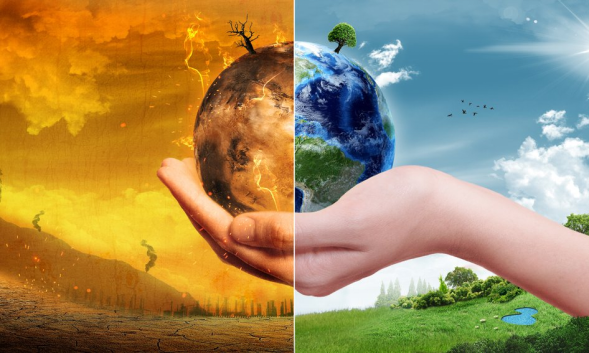In today’s health-conscious and environmentally aware world, more people are turning to purified water for daily hydration. However, while investing in a quality water purifier is essential, how you store and drink your purified water matters just as much. One common debate among health advocates, environmentalists, and everyday users is: Should you use glass or plastic bottles for drinking purified water?
The choice between glass and plastic bottles affects not only water quality and personal health, but also environmental sustainability, convenience, and cost-effectiveness. This comprehensive comparison will help you understand the pros and cons of each material and guide you to make the most informed, conscious decision.
1. Health and Safety

1.1 Glass Bottles
Glass is a non-porous, non-toxic material that does not leach chemicals into your water, even when exposed to heat or sunlight. It maintains the natural taste and integrity of purified water, and because it doesn't degrade over time, it remains safe to use again and again. Additional benefits include:
- Completely free from BPA, phthalates, and microplastics
- Resistant to staining and bacterial buildup
- Safe for hot or cold liquids
1.2 Plastic Bottles
Plastic bottles, particularly single-use or low-grade options, pose a variety of health concerns:
- May leach chemicals like BPA, especially when exposed to sunlight or heat
- Even BPA-free plastics can degrade over time, releasing microplastics
- Can harbor bacteria in scratches and grooves if not properly cleaned
Verdict: Glass is the safer, more health-conscious choice for storing purified water long-term.
2. Environmental Impact

2.1 Glass Bottles
- Made from abundant natural materials like sand
- Fully recyclable and reusable without losing quality
- Has a longer life cycle, reducing waste in the long run
Though glass requires more energy to manufacture and transport due to its weight, its durability and recyclability make it a more sustainable option over time.
2.2 Plastic Bottles
- Account for a significant portion of global pollution
- Only a small percentage (less than 10%) of plastic bottles are ever recycled
- Production relies heavily on fossil fuels, and decomposition takes hundreds of years
- Often ends up in landfills or oceans, affecting marine life and ecosystems
Verdict: Glass bottles have a far lower environmental footprint over time.
3. Durability and Portability
3.1 Glass Bottles
- Strong and long-lasting, but fragile and heavy
- Risk of breaking if dropped, making them less ideal for children or outdoor use
- Usually require protective sleeves or padding when traveling
3.2 Plastic Bottles
- Lightweight and durable
- Ideal for active lifestyles, kids, and travel
- Less risk of breakage, even with rough handling
Verdict: Plastic wins for convenience and portability, especially when you're on the move.
4. Taste and Water Quality
4.1 Glass Bottles
- Maintains neutral taste
- Doesn’t absorb or release flavors
- Keeps water cool longer and offers a "cleaner" drinking experience
4.2 Plastic Bottles
- Can alter the taste of water over time, especially if reused or exposed to heat
- More likely to retain smells and flavors from previous use
Verdict: Glass preserves the taste and quality of your purified water.
5. Maintenance and Hygiene

5.1 Glass Bottles
- Easy to clean and dishwasher-safe
- Doesn’t scratch easily or retain odors
- Less likely to harbor bacteria if cleaned regularly
5.2 Plastic Bottles
- Prone to scratches that can trap bacteria
- May stain or become cloudy over time
- Not all plastic bottles are dishwasher-safe, requiring careful manual cleaning
Verdict: Glass bottles are more hygienic and easier to maintain.
6. Cost Over Time
6.1 Glass Bottles
- Higher initial cost
- Lower long-term cost due to durability and reusability
- Often sold with premium features (leak-proof lids, insulation)
6.2 Plastic Bottles
- Low upfront cost
- Need more frequent replacement due to wear and tear
- May incur hidden costs in the form of health risks or environmental consequences
Verdict: While glass costs more initially, it proves more economical in the long run.
7. Best Use Cases for Each
Scenario | Recommended Bottle Type |
| Home or office hydration | Glass |
| Gym, travel, or outdoor activities | Plastic |
| Children’s use | BPA-free Plastic |
| Health-focused users | Glass |
| Minimalist or eco-conscious users | Glass |
8. Emerging Alternatives
While glass and plastic are the two most common materials, other options are gaining popularity:
- Stainless Steel Bottles: Durable, non-toxic, and often insulated—great for both hot and cold drinks
- Copper Bottles: Offer Ayurvedic health benefits, though not ideal for acidic liquids
- Silicone Collapsible Bottles: Space-saving and travel-friendly, though they may affect taste
Conclusion
So, glass or plastic—which is best for drinking purified water?
If you prioritize health, taste, and sustainability, glass is undoubtedly the better option. It’s safe, eco-friendly, and preserves the natural quality of your purified water. On the other hand, if your lifestyle demands durability, portability, and convenience, a high-quality, BPA-free plastic bottle might suit your needs better.
Ultimately, the ideal solution might be a combination of both: use glass bottles at home and plastic (or stainless steel) for on-the-go situations.
You’ve invested in a great water purifier—don’t compromise the quality of your drinking water with subpar storage. Choose the right bottle and drink with confidence, health, and sustainability in mind.
--------------------------------------------------------------------------------------------------------------
SANAKY VIETNAM., CO LTD - Manufacturer of Chest Freezer - Upright Cooler, Transformer, RO Water Purifier...
? Website: www.sanaky-vn.com
☎ Hotline: (+84) 986123903
 Vietnamese
Vietnamese  English
English  Chinese
Chinese  French
French  Spanish
Spanish  Russian
Russian  Arabic
Arabic  Portuguese
Portuguese